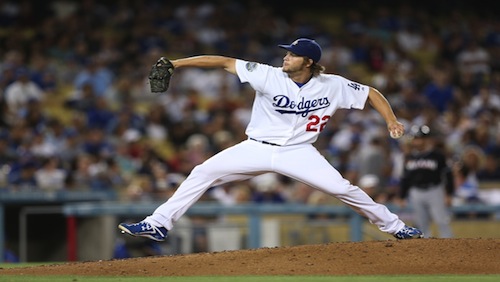
The doldrum days of winter appear to be behind us and that only means one thing for baseball fans: spring is coming and with it, the opening of the 2014 Major League Baseball season.
And like always, accompanying the opening of the season is another year’s worth of baseball handicapping. It’s widely known that baseball is one of the more difficult sports to handicap. With each team playing 162 games packed into a five-month schedule, it’l be easy for a lot of teams to take nights of, especially when a supposedly inferior team is on the schedule. Those are the types of games that really messes up even the best of handicappers.
So with so many revolving parts in terms of handicapping baseball, one of the most important ways to be a good baseball capper is to find some semblance of normalcy, or stability. The kind of things you can expect from game to game and in baseball, no more is that evident than pitching.
Now to say that starting pitchers are a cappers best friend is a bit premature, if not entirely misleading. That would have probably been true back in the day when starters were used and abused, beat up until their arms fell off. But now, teams have shifted their pitching ideologies in such a way that some starters only pitch once in every five games and even when they do pitch, managers usually have a tight string on their pitch counts, often sending them to the showers as soon as they break the 100-pitch threshold, even if its still in the fifth inning.
When we say that pitchers are important, we don’t just mean starters; we’re talking about them, the relievers, the set-up guys, and in some cases, even the closer. Understanding which team has the best and worst combinations of all four types of pitchers is one way to get on track with your baseball handicapping. The starters are the starters; it’s easy to see which ones are pitching well and which ones are giving up eight runs in the first inning. What gets lost in the mix, though, is the bullpen, which in some cases, could be argued as more important than a starting pitcher. Trust us; we’ve seen far too many instances when stud starters come out of the game with their team winning only to see the bullpen fall apart and choke away the lead. Don’t sleep on these relievers just because they pitch at the most three innings a game and their workload varies depending on match-ups.
In trying to understand the importance of the men on the mound, and how you can use that to your handicapping, it’s also important to understand how vital numbers are, specifically those that are largely ignored by a majority of baseball handicappers. We’re not talking about wins and losses and batting percentages here; we’re talking about ERAs, WHIPS, home/road splits, stadium splits, head to head history with certain hitters, the lefty/righty conundrum, and sometimes, although a subjective and admittedly ambiguous one, personal animosity.
Let’s take the home/road splits as an example. Some starters are just dominant wherever they pitch, but there are others who are far more effective in the confines of their own stadium. A majority of pitchers in the majors are pre-disposed to be more comfortable in familiar surroundings, as opposed to traveling on the road and facing a team whose hitters are familiar with their own stadium. Such a dynamic exists and it shouldn’t be taken lightly if you’re setting yourself up to be a successful handicapper.
Head-to-head history between certain pitchers and hitters should also be studied, especially when it comes to some of the best hitters in the big leagues. A guy like Miguel Cabrera is one of the, if not the best player in baseball today. But even with his world-class hitting skills, there are still pitchers he has a hard time hitting. Hitters may eventually wind up determining who wins a game (or a bet) based on the number of runs they score, but consider how important it also is to keep the other team from scoring their own runs.
Another important aspect of becoming a good baseball handicapper is to understand when certain exceptions to the norm present themselves, and its on you to take full advantage of it. Each team in baseball plays 162 games, often times taking to the field four or five times a week. It’s hard enough to keep your concentration on one game, try doing it for four days and five nights. Hitters will sometimes go through the motions, especially when the season hits that point of the year when everybody’s tired of playing so many games, traveling, playing some more games, and then doing more traveling.
You know who doesn’t get affected that much by this kind of suitcase schedule? Pitchers. These guys don’t get to play every night because if they did, Masahiro Tanaka’s shoulder might probably just fall off by August. Pitchers get the benefit of extended rests, often as long as four or five days to recharge their batteries. Same goes for the bullpen, although to a lesser extent considering the number of relievers one team usually has. Trying to find those games in the schedule where a supposedly top team is playing their fourth game in as many days, all while facing a pitcher they can’t seem to hit on historically, is an exercise in patience and non-stop studying.
But if you do find one, understand that the typical better-team-wins script may not apply, especially if one of those underdogs come into the game with one of their aces, a humming bullpen, and a deadly closer in tow.